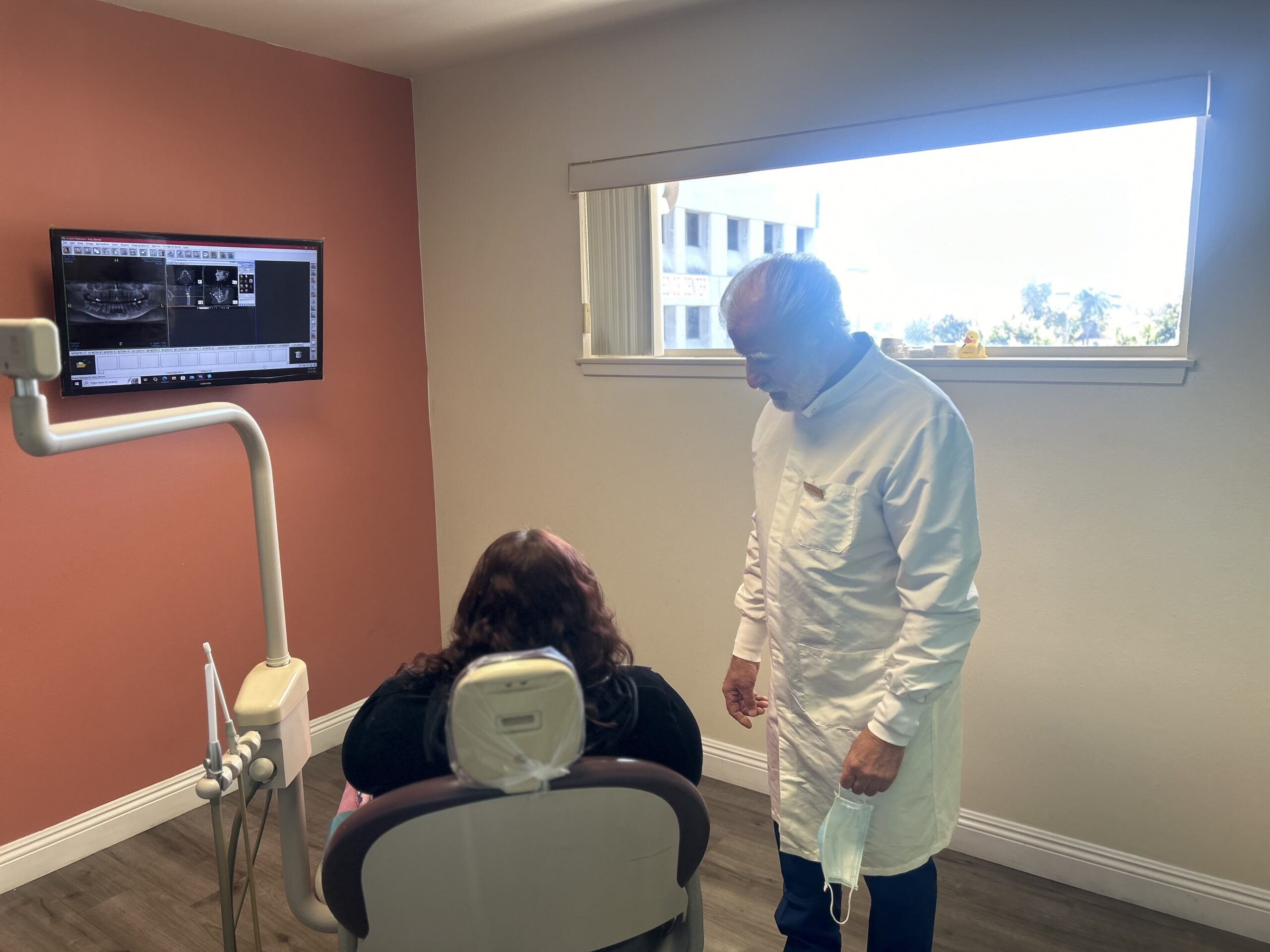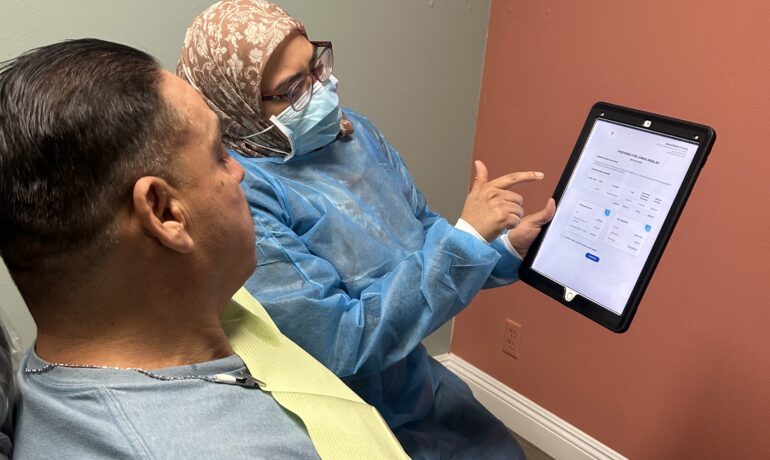Many people assume that emergency tooth extractions are avoidable with good dental care. But most of the time, the truth is, emergencies can happen when you least expect them.
It’s easy to discount pain, especially if it hits you in the middle of a busy workday. But what if we tell you that waiting too long puts your oral health at serious risk?
That’s why we at Upland Dental Practice in Upland California advocate a smarter and more proactive response to dental care.
For us, knowing when an emergency tooth extraction is necessary makes a ton of difference. That said, this article breaks down the red flags to watch for and when it’s time to act fast.

Common Causes Requiring Emergency Tooth Extraction
Once in our lifetime, we’ll experience tooth pain that won’t go away. We might use ice packs, painkillers, and even some questionable home remedies, but not everything will work. Then you ask yourself: “Could this be more than a bad toothache?” “Should I already go to the dentist for an emergency extraction?”
Making unfounded assumptions could further cause you distress. That’s why it’s important to know the common causes that lead to urgent extractions, so you will know what to do if you find yourself facing one.
Fractured Teeth Due to Traumatic Dental Injury
According to a 2023 study, traumatic dental injuries (TDI) make up 15.4% of cases in emergency dental services, with 24% occurring in people under 21.
Traumatic dental injuries are defined as injuries sustained by direct or indirect impact on the dentition or surrounding structures. Most common incidents of dental trauma are commonly due to:
- Falls
- Sports injuries
- Traffic accidents
- Physical violence
If not managed correctly, the site of injury can cause bacterial invasion, and the patient may develop an infection, necessitating an emergency tooth extraction.
Tooth Decay
When tooth enamel begins to erode due to decay, it infects the pulp, causing severe pain and abscess formation. If the infection spreads to surrounding tissues or the jawbone, extraction may be the only viable solution to prevent further complications, including systemic infection.
Periodontal Disease
Periodontal disease, at its early stage, can be diagnosed as gingivitis. As it gets more severe, it does not only infect the gums but also periodontal ligaments and other teeth structures like the alveolar bone. Tooth extraction will be required by your emergency dentist to prevent further damage to an infected tooth.
For most experts, the most common reasons for deciding on extractions were the severity of periodontal disease, insufficient alveolar bone structure, and poor oral hygiene.
Impacted Teeth
In clinical practice, extracting bone-impacted teeth can pose significant risks and lead to various complications, including pathological fractures, fractures of nearby teeth, maxillary sinus perforation, and more.
However, a retrospective study suggested that the third molar should only be removed if the second molar has no signs of root resorption or the breakdown or loss of the root structure of a tooth, often caused by pressure or contact from an adjacent tooth.
In other words, while extracting bone-impacted teeth can be risky, particularly in causing complications like fractures or sinus perforations, it is generally recommended to remove the third molar only when there is no root resorption in the second molar. This approach helps minimize the risks involved in the procedure.

What Warrants a Dental Emergency?
Now that you learned the common causes of an emergency extraction, it’s also important to know when to see an emergency dentist. Not only is recognizing a dental emergency crucial to getting timely care, but it also helps prevent further complications.
Here are some signs and situations to watch out for:
- Persistent Pain: Severe or constant toothache that doesn’t subside with over-the-counter pain relief could signal an infection or damage that requires urgent care. Pain that also worsens when biting down, eating hot or cold foods, or lying down may point to an infection or damage.
- Bleeding: Uncontrolled bleeding that continues for more than 15 minutes despite applying pressure with gauze or a clean cloth.
- Swelling: Swelling in the gums, face, or jaw accompanied by fever, difficulty swallowing, or breathing warrants may indicate an abscess or infection that can spread if not treated promptly.
- Infections or Trauma: Sudden injuries, such as knocked-out, cracked, or fractured teeth, demand immediate attention to improve the chances of saving the tooth.
Types of Emergency Tooth Extractions
There are two primary types of emergency extractions patients might expect: simple and surgical extractions. These decisions on which type of extraction to carry out is based on the patient’s tooth condition and its accessibility.
Simple extraction is a relatively straightforward option performed on teeth that are fully visible and accessible above the gum line. It only requires the use of local anesthesia and typical extraction tools such as forceps and elevators to loosen the teeth.
Surgical extraction, on the other hand, is more complex and is required for teeth that are not easily accessible, such as impacted or broken teeth beneath the gum line. This procedure often involves incisions and advanced techniques and is performed by an oral surgeon.
Can a Dentist Refuse to Extract a Tooth During an Emergency?
In some cases, the tooth may need to be sectioned into smaller pieces for removal. Along with local anesthesia, sedation or general anesthesia may be used depending on the complexity of the procedure.
The dentist’s role is to provide immediate relief during dental emergencies, with a primary focus on the patient’s safety and long-term health. If an extraction is deemed unsafe or inappropriate, a dentist can refuse to extract the tooth and recommend alternative treatments or referrals to ensure proper care. Typical reasons why dentists would refuse extraction even in an emergency include:
- Medical risks – if the patient has underlying conditions, such as uncontrolled diabetes, bleeding disorders, or heart problems.
- Lack of patient consent – if the patient refuses to provide consent upon learning the risks and benefits of tooth extraction, the dentist has the ethical obligation to follow the patient’s decision.
- Inadequate diagnosis – proceeding with the tooth extraction without a clear understanding of the dental issue poses a greater risk. If diagnostic tools, such as X-rays, reveal complications like severe infection or proximity to critical structures (e.g., nerves or sinuses), they may delay extraction until proper precautions are in place.
- Infection or Swelling: In cases of extreme swelling or infection, such as an abscess, immediate extraction may not be safe. The dentist might prescribe antibiotics to reduce the infection before performing the procedure.
Emergency Preparedness for Dental Issues
While dental emergencies are virtually unpredictable, being prepared can make all the difference, especially when managing pain and preventing further complications. Here are some practical steps to ensure you’re ready:
Assemble a Dental Emergency Kit
A well-stocked dental emergency kit can come in handy and provide immediate relief while you seek professional help. A simple emergency kit can include the following essentials:
- Pain Relievers: Over-the-counter medications like ibuprofen or acetaminophen to manage pain.
- Sterile Gauze: To control bleeding or protect a damaged tooth.
- Dental Wax: Helpful for covering sharp edges of broken braces or teeth.
- Saline Solution: For rinsing the mouth to clean wounds or preserve a knocked-out tooth.
- Cold Compress: To reduce swelling and alleviate pain.
- Emergency Contact Information: Keep a list of local emergency dentists and their phone numbers.
Learn more about some critical steps to take during a dental emergency by reading this blog post.
Establish a Response Plan: Consult an Upland Dentist
Part of prepping for any type of emergency is having a clear plan that ensures you act quickly and calmly. Steps include:
- Assessing the severity of the issue (e.g., pain, bleeding, swelling).
- Taking immediate measures, like rinsing with saline or applying gauze.
- Knowing who among your family members to reach out whenever you need company when going to your dentist.
By preparing in advance, you can reduce stress and improve outcomes in unexpected dental crises, ensuring you’re ready to protect your oral health and overall well-being.
Most importantly, having a trusted family dentist in Upland California gives you peace of mind knowing you have someone who has a deeper understanding of your oral health, preferences, comfort levels, and anxieties.
Here’s where you can rely on our dentists in Upland Dental Practice! Book your consultation now and experience top-notch dental care.


